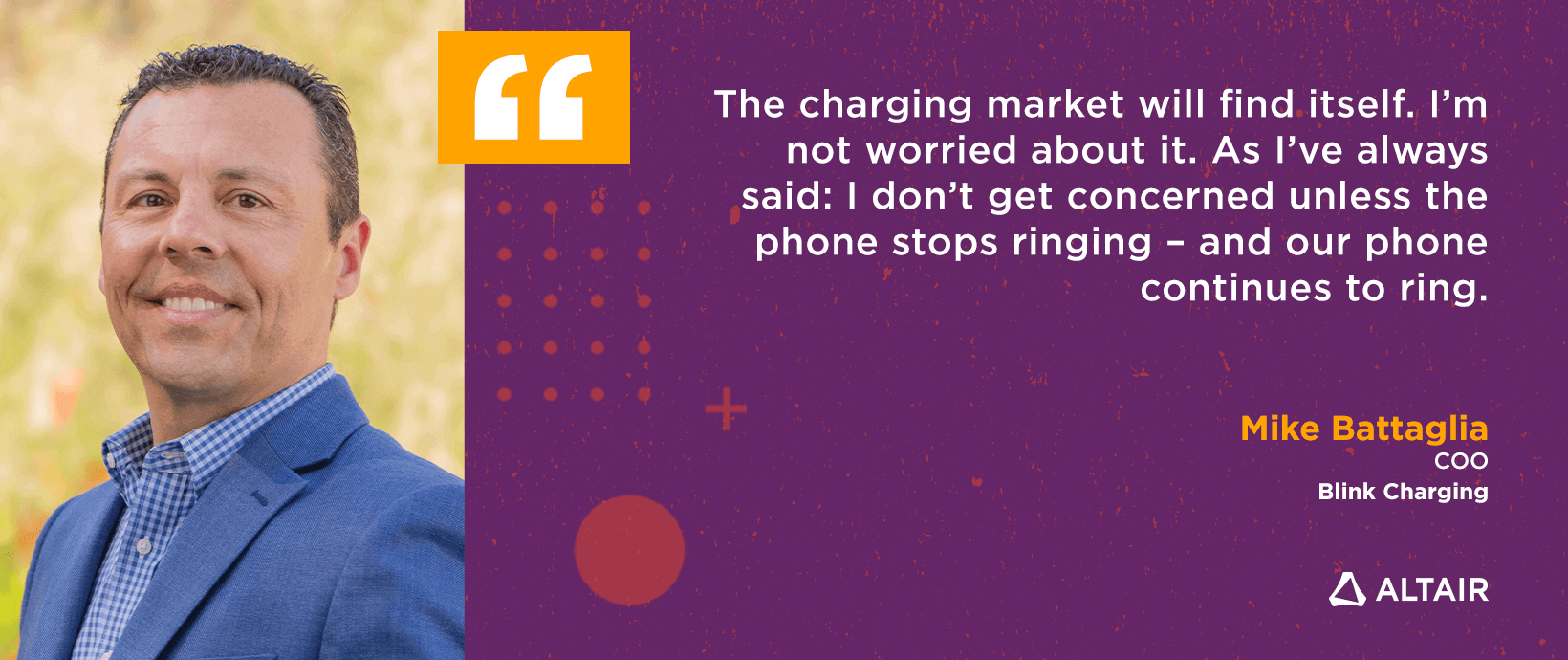Future Says S5E2 Recap: Leading EV Charging Station Development with Mike Battaglia
Electric vehicles (EVs) were once a quaint part of the automotive market, a near non-factor in global vehicle sales. Obviously this isn’t the case today, but it can be easy to forget how recent EVs are in the big picture of mass-market automobiles. In the industry’s nearly 140-year history, dating back to Karl Benz’s 1885 patent, the landscape has almost exclusively been the domain of the internal combustion engine. The Nissan Leaf, which debuted in 2010, was the first EV that caught the attention of the broader market – but it was nobody’s idea of a revolution. However, sitting here nearly 15 years after the Leaf’s debut, the conversation around EVs has changed from interesting sideshow to global imperative.
Indeed, the EV is a paradigm shift for the auto industry. A recent report from the Rocky Mountain Institute (RMI) estimated that EVs could account for two thirds of global car sales by 2030. The report also notes that, thanks to falling battery prices, EVs could hit price parity with fossil-fuel automobiles in Europe in 2024 and in the U.S. in 2026. This report portends a massive growth in EV sales. And for those looking closely, it also portends something else: a massive need for EV infrastructure, primarily charging stations.
Blink Charging’s Mike Battaglia, our latest guest in Future Says season five, knows this demand firsthand. As Blink’s chief operating officer, his mission is to ride this wave of demand for charging stations. After all, the company’s goal, according to its website, is simple: “to make EV charging reliable, convenient, and accessible for everyone across the globe.”
A Growing Market for a New Era of Automotive
Blink offers the full range of EV charging products, including “Level 2” and direct current fast charging (DCFC) chargers. The company manufactures much of this equipment itself and develops the software network that powers its international network of charging stations in-house. “We’re the only vertically integrated company in the industry,” Battaglia says. In his role as COO, he’s responsible for overseeing sales and operations, spanning business development, charger deployment, charger “uptime,” and more. Battaglia says that, since its inception in 2009, the company has sold or deployed more than 80,000 charging stations globally. In the U.S., where the company is headquartered, that number is around 20,000.
Battaglia understands that in the U.S. automotive market, there’s a lot of work to do to ensure broader EV adoption. Whereas he says the European and Asian markets have done a better job facilitating charger infrastructure and creating other EV-related incentives, there are unique hurdles left to clear stateside. But before anything else, the country needs more chargers to allay consumer charging anxiety. “The number one reason why someone does not purchase an EV is because of the [real or perceived] lack of charging infrastructure,” he says. “Is that a real concern? Yes. But every single day that goes by, there are more chargers in the ground.” Building more chargers in the U.S., he says, will take time and a strategic approach. “It’s important that it’s a phased approach, and that we have, as we say, the right charger in the right place at the right time.”
Getting the Right Charge at the Right Time and Place
Battaglia says that Blink’s strategy isn’t a “build first, ask questions later” approach. Instead, he says the company wants to ensure chargers are built where they’re going to maximize value to both Blink and consumers. “When we talk about getting infrastructure out there, we’re big advocates for Level 2 and what we call ‘community infrastructure,’” he says. “This includes charging stations that are at parks, at shopping malls, at hotels, etc.”
Battaglia says this focus on Level 2 charging – as opposed to powerful, but time- and resource-intensive DCFC charging – is key. In a landscape where scores of millions of chargers will be needed in the coming decade, a focus on DCFC would be ill-advised, since most consumers don’t need it and because it’s not scalable to the challenge at hand. “In round numbers, you can have a Level 2 charging station in the ground in 90 days. A DC fast charger takes typically a year or more,” Battaglia says. “Both types of charging have their roles, but we have to understand what the expectations and timelines are.”
Grinding Out the Growing Pains
Though the market is expanding at a tremendous rate, Battaglia says that this growth doesn’t come without growing pains. On the business side, building EV infrastructure is hard and expensive, often requiring public sector support. “There isn’t an EV charging infrastructure company operating in the U.S. that’s profitable,” he says. After all, charging stations aren’t something you just unwrap and start using. “We’re still at the beginning of this. These stations aren’t like you’re selling something that you can plug in and flip on right away. These are construction projects – in some cases, heavier infrastructure projects. It takes time to scale and become more efficient.”
And there are other external market factors that make it a tough industry to succeed in. For one, EV adoption – and spending public money on EV infrastructure – can be a politically charged topic that can ensnare seemingly mundane public projects. The industry also faces its share of macroeconomic challenges, such as materials shortages, supply chain disruptions, labor shortages, etc. But this is all part of business, Battaglia says. “This is not a linear thing. Nobody expected this to have no bumps in the road – there are very few technologies that progress that way,” he says. “The market will find itself. I’m not worried about it. As I’ve always said: I don’t get concerned unless the phone stops ringing – and our phone continues to ring.”
Exciting Times on the Horizon
If things continue to trend as they’re trending now, it’s likely that Blink’s phone will continue to ring. Battaglia says that while, yes, there are internal and external growing pains, there are also significant external incentives designed to spur EV infrastructure expansion both in the U.S. and around the world – and these are already having an effect. For example, in the U.S., he points to the National Electric Vehicle Infrastructure Formula Program, known as NEVI.“NEVI is very beneficial to the industry, not just for Blink,” he says. “NEVI has $2.5 billion set aside for Level 2 community charging – and that’s Blink’s bread and butter.” And other incentives, such as bans on the sales of internal combustion engine vehicles, are designed to foster EV and charger growth. In all, there’s reason to believe Battaglia and Blink may be very busy in the coming years, even if they have to clear a few speed bumps along the way.
Click here to listen to the full episode with Blink Charging’s Mike Battaglia. To check out the rest of Future Says season five, visit https://altair.com/future-says. And be sure to subscribe to Future Says on Spotify, Apple Podcasts, Amazon Music/Audible, YouTube Music, and Podcast Addict.




